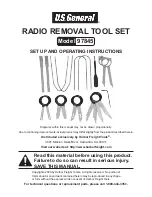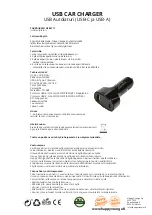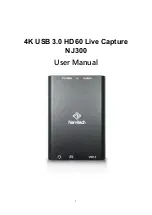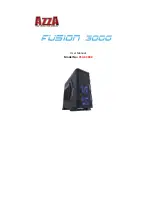
3 of 8
© 203 Watts Radiant
Vehicle tire and pedestrian traffic can track water and contaminants onto the snow
melt area. If the snow / ice sensor is located in the traffic area, snow melting will be
triggered by the passing traffic. This may be desirable in commercial areas where
excessive traffic can cause the surface to become icy. In residential installations, the
amount of traffic is usually limited, and it may be desirable to locate the snow / ice
sensor away from the traffic area. This will reduce the number of snow melt events
that occur and thereby reduce the annual fuel consumption.
Locate the sensor midway between the heating pipes or elements.
Conduit
------------------------------------------------------------
Place the sensor socket at the chosen location and run a conduit for the cable from
the socket to the snow melting control. If more than 65’ (20 m) of cable is required to
reach the control, run the conduit to a weatherproof junction box. The sensor cable
should be run in its own conduit and not in combination with high voltage wiring.
The conduit length from the sensor to the junction box should be less than the 65’
(20 m) of cable supplied with the snow / ice sensor.
At the junction box, additional 8 AWG, 5 conductor cable can be spliced on to
increase the total length to 500’ (50 m) from the sensor to control.
Avoid tying the conduit to the rebar within 6’ (2 m) of the socket. This allows the rebar
grid to move without disturbing the position of the socket.
•
•
The top of the snow / ice sensor should be flush and parallel
to that of the snow melt surface.
When the sensor is installed on a sloped driveway, the sensor
must be installed near the lowest elevation of the slope. This
is required since the melting snow or ice runoff water will
drain toward the lowest point on the driveway and keep this
area wet for longer periods of time.
Sloped Surfaces
----------------------------------------------------
Installing the Socket
------------------------------------------------
Mounting Plate
. Drainage hole
2. Socket screw holes
3. Rebar holes
4. Rebar tie holes
5. Conduit tie holes
3
3
3
3
4
4
4
4
5
2
1
2
2
2
A mounting plate has been included to simplify the
installation of the sensor socket. When possible, the
mounting plate should be located directly on top of gravel
in order to provide good drainage. If the slab is more
than 4” thick, a mound of crushed rock or a styrofoam or
wooden block can be used to elevate the socket. A hole
must be punched or drilled in the styrofoam or wooden
block in order to provide drainage.
Failure to provide adequate drainage under the socket
may reduce the life expectancy of the snow / ice
sensor.
The mounting plate can be fastened to the ground by
driving /2" (2.7 mm) rebar through the four holes located
on each of the four corners and then tying the mounting
plate to the rebar.


























